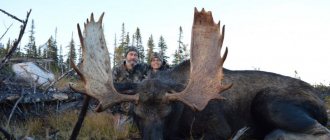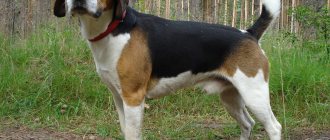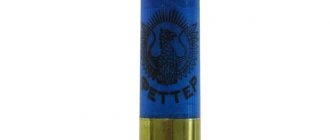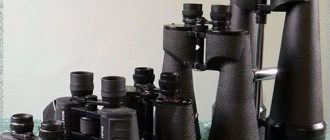Boar hunting is one of the most popular and loved by many of our hunters. The wild boar is both an interesting object of hunting and a valuable trophy. With all this, boar hunting is one of the most dangerous hunts; every year we learn about cases of hunters being injured or even killed during this hunt.
There are different ways of hunting this animal, each of which has its own characteristics, advantages and disadvantages. Each hunter chooses the method that he likes best. Let's talk about this in more detail.
Wild boar: appearance, habitats, nutrition
The wild boar, also called boar or wild pig, is a cloven-hoofed, non-ruminant mammal of the genus Porcine. It is the ancestor of the common domestic pig.
It differs from the domestic pig in its appearance: a shorter and denser body, more powerful and longer legs, a more elongated head shape and sharp erect ears.
The boar has constantly growing upper and lower fangs that protrude upward from the jaw, and in the male they are much more developed than in the female.
The color of the boar's bristles is black-gray-brown, the muzzle, tail, lower legs, and hooves are black. The color of a boar's bristles can vary greatly depending on the location and age of the boar; there are both completely black boars and light-colored, almost whitish boars. On the back of the boar, the bristles form something like a mane, which puffs up when the animal is excited.

The weight of a wild boar is most often up to 100 kg, but sometimes there are individual individuals weighing up to 150-200 kg, and sometimes more. The height of the boar at the withers reaches 1 meter, the body length can reach 175 cm.
The wild boar prefers to live in mixed and deciduous forests, in steppe areas. In Russia, the wild boar lives throughout the European part of Russia, the Caucasus, and Southern Siberia. The wild boar is not found only in the tundra and some taiga areas.
The wild boar is an omnivore; it eats fruits, plant roots, acorns, nuts, and sometimes eats small animals and carrion. If there are agricultural fields near the habitat of a herd of wild boars, then the wild boars feed on them with pleasure, eating potatoes, grain crops, and corn.
Wild boars often settle in swampy areas overgrown with reeds and bushes. Choppers usually stay separate from the herd, joining it only during the rutting season. The herd of wild boars consists of females, this year's cubs and last year's young animals of both sexes.

The wild boar rut occurs from November to January; at this time, the loppers behave aggressively and fierce fights often occur between them. The female's pregnancy lasts 18 weeks, and the litter contains up to 12 piglets.
Boars are capable of reaching speeds of up to 40 km/h, they are excellent swimmers and are able to overcome large expanses of water. Boars have excellent hearing and sense of smell, but poor eyesight.
Wild boars lead a mainly twilight and nocturnal lifestyle; they spend the entire night in search of food, while covering considerable distances. During the day they rest in secluded places specially chosen for this purpose.
Wild boar - description and habitats
A wild boar is often called a cleaver, a boar, a boar - a smart animal. This is a completely undomesticated pig. By all indications. He is very strong and dexterous. Carries massive dimensions and weight. The boar's speed also deserves respect. It’s not even worth talking about the external differences between a domesticated individual and a free representative of boars. They are colossal.
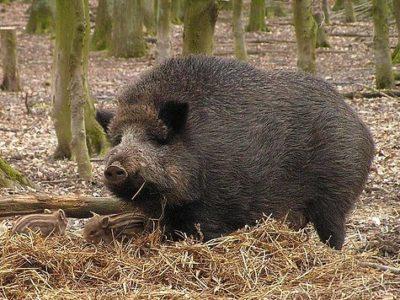
The main place of residence is a dense, dense forest. According to the hierarchy of forest inhabitants of the animal world, the cleaver is the largest of them. The strength and power given to him by nature protect this title, sometimes defending it even against a more terrible and larger animal - a bear, a moose. Especially if boars act in packs.
The boar's torso is baggy and large, its legs are short. The average height of an ordinary individual is from 60 to 120 cm. The boar is not very large in length - approximately 90 -130 cm. Other, individual individuals reach a length of up to 190 cm. The wide boar's chest is his decoration, proof of real animal strength and power. The pelvis is too narrow for the overall structure of the body, the short thin tail - it awkwardly fits into the overall physique of the animal. The muzzle is large, wide, short, as if planted on a wide chest, and has a massive skull. From birth, nature awarded all pig-like animals with a distinctive muzzle - their snout-shaped nose.
The massive lower jaw is decorated with sharp fangs, the two main ones are the main weapon, a tool for survival in the wild for the predatory boar. The beast is omnivorous.
Several main types in the habitat:
- Indonesian;
- Oriental;
- West.
These geographical types have stages of division into subcategories, which would not be covered in detail in all the pages of the encyclopedia. It is worth knowing their name to continue further with the general description of the pig-like beast:
- Asian wild boar;
- European wild boar;
- African warthog.
In Russia, from the eastern taiga forests to the western undergrowth, the most common are the Asian and European subspecies.
Boar hunting rules
- As a rule, the wild boar hunting season lasts from June 1 to February 28, but each region has its own rules; be sure to check the timing of the hunting season and the gender and age of the animal that can be hunted in the place where you are hunting.
- The better you know the area where you will be hunting, the better. When exploring the area, pay attention to the feeding areas of wild boars, watering places, carefully examine trees with stripped bark, these are the so-called boar scratchers. Be sure to study the trails along which wild boars move from their daytime feeding areas to their night feeding areas; such trails are a good place to set up an ambush.
- No matter how you hunt wild boar, always remember that wild boar has an excellent sense of smell. Before and during boar hunting, do not smoke, drink alcohol, do not eat food with a strong odor, do not eat onions, garlic, or wear cologne.
- Before hunting, do not wash clothes with detergents that have a strong smell; it is better to take clothes out of human habitation outside a few days before the hunt so that they do not have the smell of human habitation.
- When hunting wild boar, you cannot use repellents to protect against mosquitoes and midges, so you can protect your face with a mosquito net, and light, thin gloves on your hands that do not interfere with shooting.
- Clothes for boar hunting should be warm, comfortable, preferably in camouflage colors and always made of fabric that does not rustle. A wild boar has very good hearing; it can hear the noise made by your clothes from several tens of meters away.
- The best point for a shot when hunting a wild boar is the area of the shoulder blade; with such a shot, the bullet hits the heart area and the boar, as a rule, remains in place.
- A boar coming at a hunter is a bad target, it is better not to shoot, but to wait until the boar notices the hunter and turns to the side, this moment is ideal for a side shot.
- At a wild boar running away from you, it is best to shoot at the ridge; such a shot, with a successful hit, stops the animal in place.
- When shooting from a smoothbore gun at a moving boar, the most effective shots are at a distance of up to 30 meters.
- After shooting at a wild boar, if the animal has fallen, do not rush to quickly approach the animal. Until you are sure that the boar is dead, you should not approach it at all. You need to approach a hunted lying animal from behind, so that if the boar jumps up sharply, it will not be able to immediately attack you. If the boar's mane is bristling, its ears are flattened, the boar is alive and prepare for a sudden attack. When approaching a hunted animal, you need to keep your weapon loaded and ready to fire. A control shot should be made in the area of the boar's ear.
- If during a hunt a boar attacks you, in order to dodge it, you need to sharply jump away from it to the side. Although the boar is a fast animal, it is quite clumsy; if you jump away from it to the side, it does not have time to turn in your direction and rushes past; as a rule, it does not return to attack again.
Hunter Actions
Hunting for wild boar in a pen must be clearly organized. Every hunter should know what to do and how to behave in a given situation. It must be remembered that the boar will run away from pursuit, hiding in the bushes, and therefore, arrows must be ready. “Hunting for wild boars with dogs” is a video that will help you sort out all the knowledge you’ve acquired.
As you look through it, pay attention to the hunter-dog relationship. Watch how the hunters give them commands, follow them while the dogs follow the trail, what the hunters do when the dogs find an animal and begin to bark at it.
“Hunting boars in a pen” is a video that will demonstrate the actions of hunters when the animal is under siege and dogs are squeezing it into a ring, and most importantly, it will show the behavior of the boar itself and what can be expected from it.
When the animal senses a hunter, it rushes headlong, turning the hunt into a deadly rodeo. Therefore, it is very important to remain quiet and go against the wind.
When shooting at a wild boar, you need to try to hit a vulnerable spot. This is very difficult, as it spins and there is a high probability of hitting the dog.
And if the bullet reaches the target, but does not knock him down, the animal runs even wilder, and adrenaline drives him so that the hunters may simply not catch up with the boar.
In winter, of course, you can find it by following tracks in the snow, but in the snowless season it is very difficult. “Winter boar hunting” is a video that will become an indispensable assistant for self-study.
It must be remembered that in winter you can hunt wild boar only during the day, until about 5 pm. Shooting ability is of great importance, not physical preparation.
So, be vigilant, careful and learn, gentlemen, learn!
Wild boar hunting is allowed from June 1 to February 28, but the time depends on the region where the hunt will take place.
In the summer, the boar must accumulate fat for the winter, creating a storehouse of nutrients and beneficial substances in its body. To do this, he consumes a large amount of food, creating a lot of noise when feeding.
Expert opinion
Tarasov Dmitry Timofeevich
Master of Sports in mountaineering. Author of scientific articles on the topic of survival in the wild
This is the perfect moment for a hunter to shoot an animal. It is not difficult to calculate the place where a wild boar grazes; it is enough to go to a reservoir, where in the summer it comes to water and swim.
An observant hunter will immediately notice tracks if there are any and use them to find the wild boar's camp, which is often located in difficult terrain. The presence of an animal is indicated by: dug up earth, mud puddles in which wild boars like to wallow, the presence of droppings and a specific smell.
In the evening, when it begins to get dark, wild boars go out into the open.
In early September, it is easier to track down a wild boar, due to the fact that the animal’s main feeding occurs in agricultural fields. Sometimes hunters specially sow clearings to attract animals.
The ambush is arranged on the paths to these clearings or near the feeding site itself. The best time for hunting is after sunset. In late autumn, wild boar is hunted with dogs. In the first snow, the animal is easy to track by following its tracks.
No less effective methods are corralling and observing from a storage shed, that is, from a tower.
Winter weakens the boar, and it becomes easy prey for the hunter. Tracking the beast will not be difficult. In search of food, the boar tears up the snow, destroys anthills and leaves a trail in the snow. The distinctive feature of his elk track is the fingerprint that is on the hind legs.
Every hunter should know that the wild boar is a strong animal and can pose a danger to humans while hunting.
When using any hunting method, you should adhere to the following rules:
• explore and study the territory in which it is planned to track the animal;
• think about equipment, clothing should be practical, not emit extraneous noise or odors;
This is interesting: Hunting for grouse with stuffed animals: features of making stuffed animals and conducting fishing
• provide protection from mosquitoes and midges, it is better if it is a mosquito net;
• the boar's charm is well developed, so when going hunting, you need to take this fact into account and not use strong-smelling products and perfume;
• choose the right type of weapon; when shooting at a distance of 30 meters, use a smoothbore weapon; for a longer distance, use a rifled weapon;
• in order not to frighten off the animal when detected, you need to behave quietly;
• the most effective shot is in the scapular region, if the animal runs into the ridge;
• after the shot, be careful and watch the boar without approaching it;
• if the animal is alive, then its ears will be pressed to its body and its fur will be tousled; it is necessary to fire a second shot in the ear area.
Weapons for boar hunting
Both smooth-bore and rifled hunting weapons are used for boar hunting.
Smoothbore weapon for wild boar hunting
For wild boar hunting, hunters use smoothbore guns of different calibers: , 16 and , but 12 gauge is preferred. The boar is quite a serious animal and to stop it you need a gun with high shot energy and great stopping power.
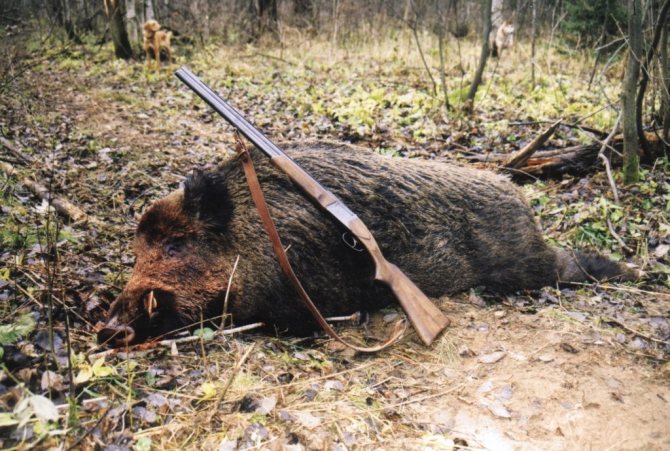
To hunt wild boar, you should use bullet cartridges. Some hunters, when hunting gilts, use cartridges loaded with large buckshot, but if you encounter a really large animal while hunting, then a cartridge loaded with buckshot will clearly not be enough for you.
Among the bullets for boar hunting, you should choose those that have proven themselves well with hunters over the years: Polev bullet, Gualandi bullet and Brenneke bullet. All of them show excellent results both when shooting in the forest and when shooting in open areas.
Some hunters, when hunting wild boar at night, install an under-barrel flashlight on their guns, which allows them to make an accurate shot in the dark.
Rifled weapon for boar hunting
A rifled weapon is the best choice when hunting wild boar; it gives higher accuracy and a longer shot distance.
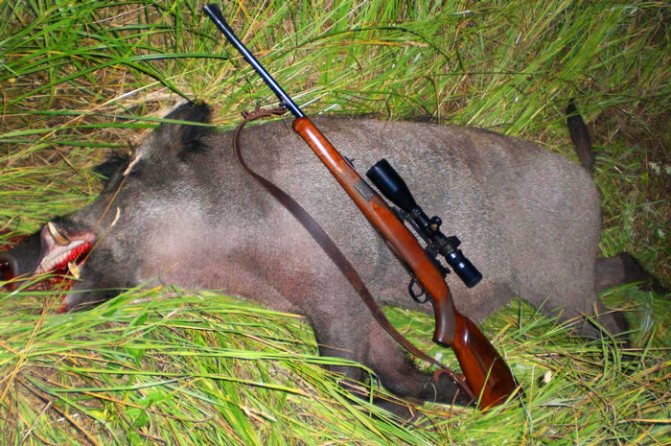
The caliber of a rifle for confident wild boar hunting should be no less than 7.62x51 (308Win). Some hunters use 223Rem caliber weapons when hunting gilts, but this caliber is clearly not enough for a confident shot at a larger animal.
When hunting wild boar with a rifle, it is most often equipped with an optical or collimator sight. For night hunting of wild boar, night vision sights (NVGs) or even thermal imaging sights are installed on it.
Hunting within the law
Standard hunting rules in the Russian Federation are determined by Order No. 512 of the Ministry of Nature. They set out the basic rules that allow licensed hunting of ungulates, including wild boar.
- The hunter is obliged, at the first request of the supervisory authorities, to provide the following documents: a hunting ticket, a weapons license, a permit issued by the hunting authority and allowing hunting in this territory. When organizing a group hunt, a leader is appointed who holds this voucher.
- Hunting dates are determined by regional regulations and depend on the specific region. Basically, spring wild boar hunting is prohibited, but it is allowed from July and lasts until February. The beginning of the season, as well as its duration, is announced additionally by local authorities.
- The fact that the animal was injured must be documented. The success or failure of its selection is also recorded. One day is allotted for collecting a wounded animal, and the day on which the wound was made is not taken into account. If the animal cannot be found, a special note is entered into the permit. The permission itself loses its legal force. If, while chasing a wounded boar, you had to leave the territory of the hunting ground or enter the territory of another land, then the administration of the hunting area must be notified.

- According to the laws of the Russian Federation, it is prohibited to hunt with pneumatic weapons. Only a bullet is selected as a projectile, since shot is prohibited when hunting wild boar. it is necessary to understand that such prohibitions reduce the likelihood of a wounded animal leaving, otherwise it will face a painful death.
- Another limitation in hunting concerns the magazine capacity of semi-automatic weapons. The magazine should not hold more than five rounds, otherwise the violator may lose his hunting license. The rules for driven wild boar hunting exclude the possibility of using vehicles, both ground and air. It is also prohibited to use electronic baits that imitate the voice of a wild boar. It is prohibited to use automatic fishing mechanisms (traps).
- During the winter hunting period, which runs from January to February, the use of dogs is prohibited. The exception is the need for a pen to collect wounded animals. You also cannot use thermal imagers, set up trapping pits, or weave loops.
For violating the rules of boar hunting, the hunter faces administrative liability, which manifests itself in the imposition of a fine, confiscation of weapons, cancellation of a hunting ticket and even revocation of a license.
How to shoot a wild boar correctly
When hunting a wild boar, you should remember that the wild boar is a very strong animal that can withstand a wound; even if seriously wounded, a wild boar is capable of running a considerable distance.
When a wild boar is wounded, it often happens that the wound becomes covered with fatty tissue and blood stops flowing from the wound.
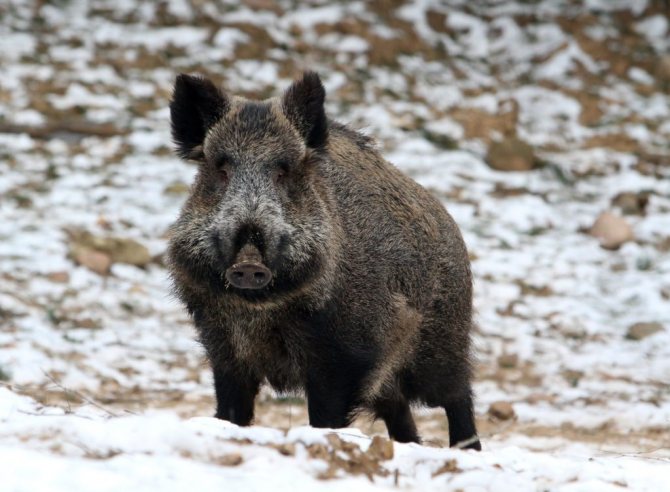
After shooting at a boar, the hunter must follow the trail left by the boar for at least 200-250 meters to make sure whether there was a hit or not.
By the nature of the traces of blood left by the wild boar, one can roughly determine the location of the hit and the nature of the animal’s injury. Also, the location of the hit can be judged by the behavior of the animal after the shot.
If it hits the heart, the blood will come out in spurts; with such a hit, the animal most often will not go further than 40-50 meters.
When the blood enters the lung, it is sprayed into small drops; in this case, the animal will not go further than 200-250 meters.
If blood does not appear immediately, but after several tens of meters, this most often indicates that the boar has been wounded in the muscle.
If the boar tries to rise and stand on its front hooves, this indicates a hit in the spine.
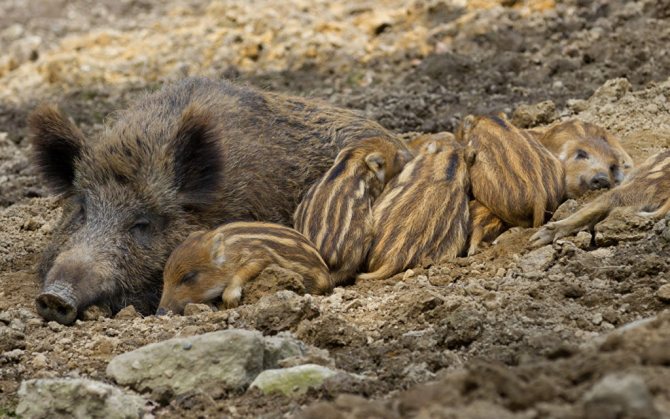
When hit in the head, the boar most often falls, convulses, then jumps up and runs away.
The color of the blood can also tell you where the animal was wounded. Bright, light blood indicates a wound to the chest cavity, dark blood indicates that the boar was wounded in the liver, spleen or kidneys.
It is better not to chase a wounded boar right away, but after 30-40 minutes, during which time the animal should not go far, having run some distance and not feeling chased, it will most likely lie down in a secluded place to rest and if the wound is serious, from blood loss will occur.
In the case of hunting a wild boar at night, they begin to look for a wounded animal early in the morning; it is best to do this with the help of dogs. Chasing a wounded boar at night is extremely dangerous.
Night hunt
Hunting at night is also popular among boar hunters. At night you must be extremely alert, have sufficient energy and sufficient skills. You can hunt from the approach, and when possible, you can also hunt from an ambush. You can hunt from the approach in winter, but only when there is not a lot of snow and it is not completely dark outside. And then everything follows the old pattern, you chase him into the wind and aim at a distance of 30 meters.
But it will be safer to hunt from an ambush, that is, you will be on a tower, and the huntsmen will lure the wild boars directly to you. Don't forget about night vision devices that will help you hit your target accurately. Be careful and don't forget about safety. If you are a beginner, then think about whether it is worth putting your life at risk. Hunting a wild boar requires a lot of experience and strength, because not everyone is able to catch this large animal.
Boar hunting in summer
Wild boar hunting in summer begins on June 1. In summer, wild boars feed heavily, gaining fat. A herd of wild boars constantly moves from place to place. At dusk, wild boars go out to open places: fields, meadows and clearings near the forest.
From the tracks left by wild boars, it is easy to detect their constant feeding areas. The specific boar smell, mud puddles, distinct hoof marks, boar droppings and dug up earth, all of this points the attentive hunter to the location of the wild boars.
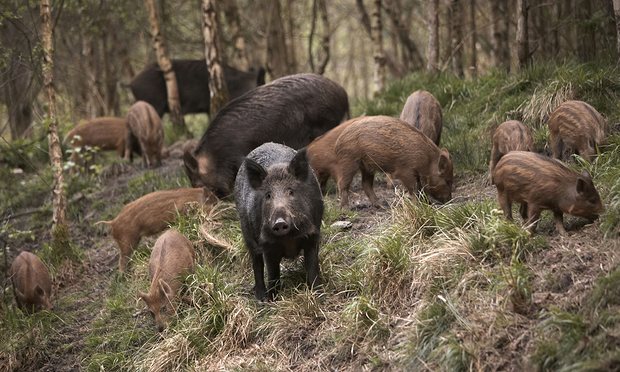
Summer is a period of hot weather, the boar needs water. Firstly, in order to drink. Secondly, in order to swim, because even a wild boar does not have sweat glands and swimming is the only way to cool down. Therefore, the best way to find wild boars in the summer is to carefully examine the banks of reservoirs near the forest and, having found traces, track down the wild boars’ feeding areas.
When hunting wild boar in the summer, you need to take into account that the summer trails of wild boars pass through difficult places, through thickets of bushes, overgrown ravines and forest windfalls.
During feeding, the boar herd creates a lot of noise, which allows the hunter to quietly approach them within shooting distance.
In the summer, the hunter is interested in the lops and gilts of the previous year; pigs with small piglets are not hunted in the summer.
The main methods of hunting wild boar in the summer: from a tower, from ambush, on the mud, in the fields and from the approach.
Weapons and clothing
A weapon for a wild boar must be reliable, work accurately, without misfires. Both smooth-bore and rifled bullet weapons are used for hunting. Smoothbore - for bullets of at least 32 grams, rifled - for bullets of at least 7.62 mm caliber.
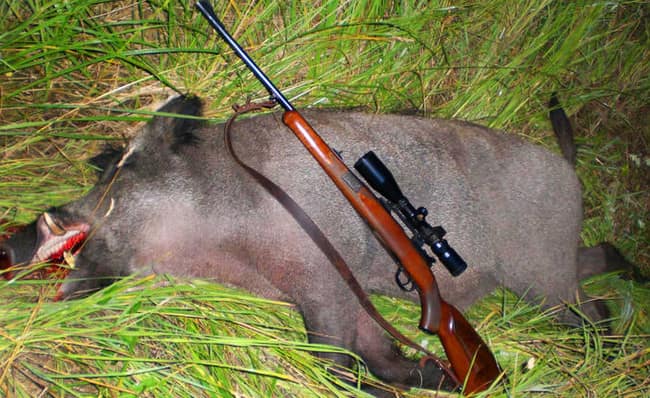
The hunter chooses clothes that are warm, practical, and not new. The fabric should not rustle or creak. On your feet - practical boots. It should be taken into account that during the hunt you will have to walk a lot, probably overcoming small water obstacles and wading through mud. Care should be taken to ensure that the shoes withstand all tests.
Remember! Do not wear new clothes or shoes when hunting. Firstly, the boar will smell your scent from afar, and secondly, new things have a habit of rubbing.
Some experienced hunters advise wearing “moccasins” made from boar skin over the main shoes.
A wild boar caught from the approach is not only a valuable trophy, but also proof of the hunter’s experience, courage and composure.
Boar hunting in autumn
The best time of year to hunt wild boar is the beginning of autumn. At this time, wild boars actively feed in agricultural fields; at the end of summer and beginning of autumn, wild boars go out to feed immediately after sunset; in the second half of September they go out to feed in complete darkness.
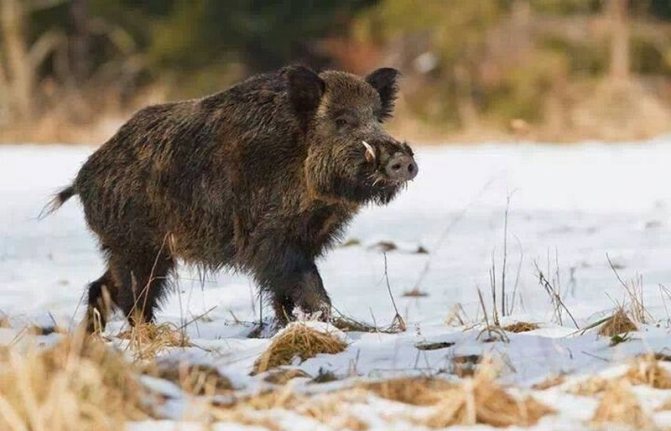
When hunting wild boar in the fall, the best way is to hunt from ambush, which is carried out either on the paths that lead to the feeding areas, or at the feeding area itself. At the end of autumn, there is nothing left in the fields that can be food for wild boars and they stop going to them.
At the end of autumn, wild boar begin to be hunted in all possible ways: in a pen, from a tower, from a blind, in the mud, in the fields, from the approach, with dogs.
Some features of hunting
When hunting an animal from the approach, it is recommended to follow the following rules:
- The place for shooting should be chosen close to cover, because in case of a miss you will need to quickly hide.
- If you shoot at a wild boar and it does not move, this does not mean that it is dead, so you should approach it carefully and from the back, and it is also recommended to make a control shot.
- It is best to start hunting before sunset, since wild boar activity begins at dusk.
Wild boar hunting in winter
Winter is a difficult time in the life of a boar: frosts followed by thaws, snow, little food, all this greatly affects the condition of the boar.
In winter, the wild boar mainly feeds at night, but sometimes goes out to feed during the day. Wild boars make their roosts in winter under large spruce trees and on anthills. In winter, it is much easier to find wild boar habitats, tracks in the snow, devastated anthills, wild boar burrows - all these signs indicate that wild boars are staying somewhere nearby.
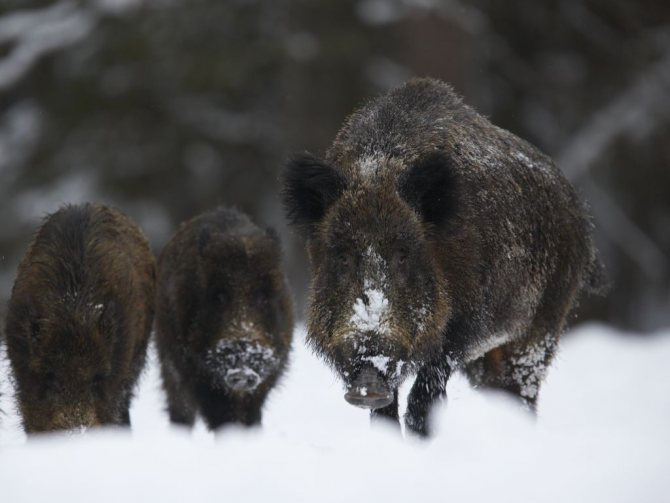
When tracking wild boars in winter, it is better to move on old snow; it does not make the same creaks as fresh snow and the hunter can get closer to the wild boar.
In winter, wild boars are hunted in all possible ways; it is in winter that hunters hunt the largest number of wild boars.
Using a tower
This type of hunting gets its name from the high structures from which it is necessary to shoot. A platform is equipped on an elevated platform. Sometimes a booth is set up there, since it takes a long time to wait for the animal while inspecting the territory. Complementary foods must be placed below.
The period for such a hunt is winter; this time of year was not chosen by chance. It is in winter that wild boars do not have enough food and are able to resort to complementary feeding.
The boar appears at night, so you need to be extremely careful. Windows, doors and benches of the tower should not creak, because the boar is a very cautious animal that listens for a long time before approaching. It is necessary to fire two shots in succession at once so that the wounded animal does not escape.

Boar hunting in a pen
Hunting for wild boar in a pen is the main way of hunting wild boar in most regions of our country. Drive hunting is a collective hunt that involves a large number of participants, who are divided into two groups: beaters and shooters.
The task of the beaters is to raise the animal and drive it to the chain of shooters; the task of the shooters is not to miss the animal and make an accurate shot in time.
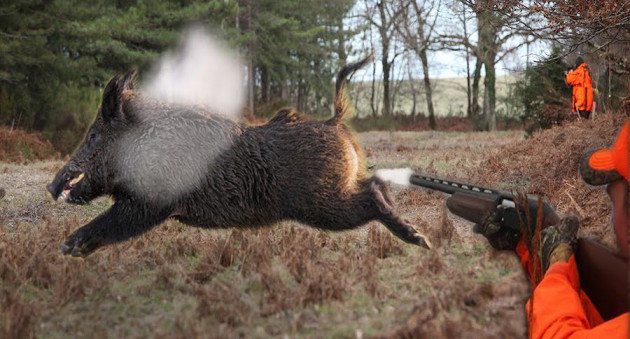
Before starting a wild boar hunt, you need to determine the area of the forest where the wild boars are located. Go around or around it, counting the number of entrance and exit tracks. Blind driving, without such a preliminary walk-through, can only be carried out if there are a large number of wild boars in the area.
After the organizers are convinced of the presence of a boar, a chain of shooters is placed, since boars most often leave the beaters along their entrance tracks, most often the shooters are placed on them. When placing shooters, you need to take into account the direction of the wind; you cannot place shooters so that the wind carries their scent towards the wild boars.
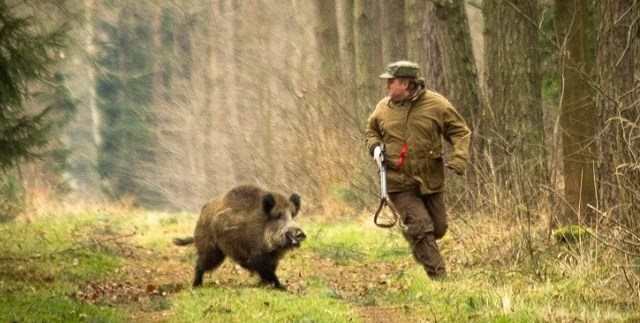
The hands on the number must remain absolutely silent. It is better to stand with a tree behind you so that your figure is not so noticeable. Shooters must strictly follow the rules of driven hunting: they cannot leave their room until the end of the hunt, they can only shoot at a clearly visible target, they cannot shoot inside the pen and at the line of shooters, they must let the boars pass through the line of shooters and only then fire a shot.
The beaters, moving in the corral towards the line of shooters, must be careful, they need to move slowly, they can lightly tap the trees with a stick and quietly talk to each other. For safety, beaters must wear bright orange vests.
Hunting for wild boar is very interesting and perhaps the most exciting of all types of wild boar hunting.
Hunting for wild boar from the approach (stealth)
Hunting for wild boar from the approach is the most difficult way to hunt wild boar; this type of hunting is not suitable for novice hunters, as it requires good knowledge of the wild boar’s habitats and its behavior, as well as extensive hunting experience.
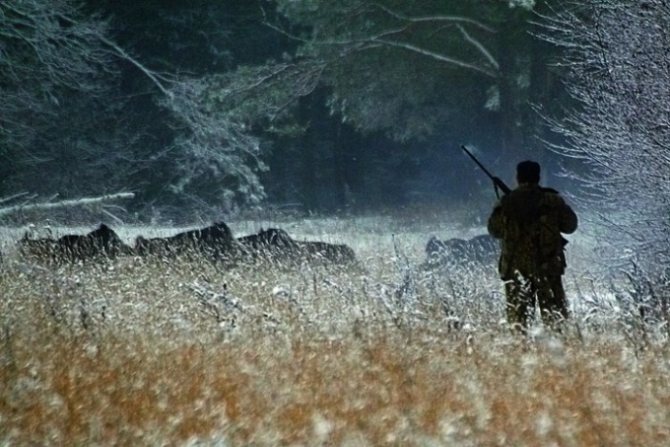
Hunting for wild boar from the approach is carried out both during the day, when the wild boars are resting for the day, and at night, when the wild boars are feeding.
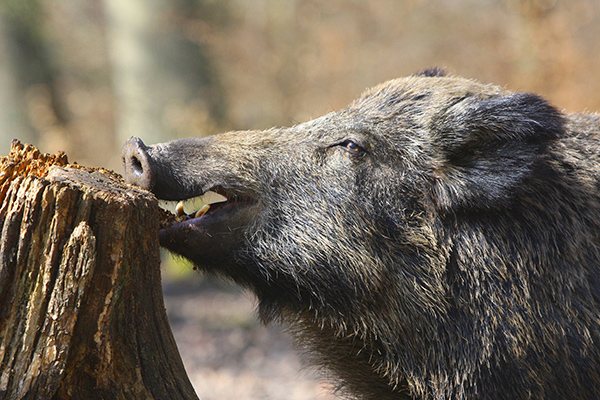
Experienced hunters know well the places where wild boars rest for the day; such places are used by wild boars on an ongoing basis. The hunter goes around such places, and when approaching the place where the wild boars are supposed to rest, the hunter maintains silence, moves very slowly and carefully, the wind should blow in the direction from the place where the wild boars spend the day towards the hunter. Such hunting requires extreme caution; awakened and frightened boars can fly at the hunter.
When hunting wild boar from the approach at night, the hunter goes around the unharvested fields where wild boars feed at night. During night feeding, wild boars behave noisily, constantly making loud sounds; the hunter, hearing the wild boars, carefully approaches them within a sure shot distance. The hunter moves towards the boars only when they are eating; if the boars are silent, it means they are listening, you need to stop and wait for some time. When approaching a wild boar, carefully watch the boar's tail, when the boar is calmly feeding, the tail is constantly in motion, if the boar stops moving its tail, it heard or smelled something, stop, don't move, the boar will calm down and continue eating, only then continue movement.
Success in wild boar hunting from the approach depends on compliance with certain rules and subtleties; more about this type of wild boar hunting in the article Boar hunting from the approach.
The beginning of the way
Wild boar hunting with dogs is carried out in a place near the forest. It is ideal if there are thickets or reeds nearby - places where the wild boar feeds.
If the hunt takes place in winter, then the boar is found there more often at night than during the day. Even in severe frosts, the wild boar loves to swim in bodies of water, so these are the ones you need to look for first.
In addition, pay attention to ruined anthills, because sometimes they use them for nesting. To learn how to look for wild boar tracks, you can watch a training video, fortunately there are a huge number of them on the Internet.
Expert opinion
Tarasov Dmitry Timofeevich
Master of Sports in mountaineering. Author of scientific articles on the topic of survival in the wild
There are several types of wild boar hunting with dogs: a drive of 3-5 people and a drive by a team of hunters. In the first case, you need an experienced hunter who knows the area, bedding areas, and is familiar with the habits of the wild boar, who will lead the hunters along the trail.
In the second case, the hunters must split up: the first group looks for the boar and goes forward (beaters), and the second group remains in place, taking up positions where the animal is most likely to run (arrows).
When choosing a weapon for hunting, experienced hunters prefer a gun. Wild boar hunting with a smooth-bore automatic weapon is most effective, because when using a semi-automatic or pump-action weapon there is a possibility of difficulties with reloading.
In addition, when hunting with a smoothbore weapon, you can shoot in different positions: standing, lying down, sitting, etc. By typing in a search engine the tag: “Boar hunting with a shotgun video,” you will get a clear demonstration of the relationship between the choice of weapon and a successful hunt, as well as a rationale for the difference between single-barreled and double-barreled weapons, as well as the use of shot or bullets.
This is interesting: Partridge hunting in autumn: where to look, what weapons and decoys to use
Hunting for wild boar at crossings
Wild boars most often move through their lands using their favorite routes, and the same routes are used by wild boars from year to year.
The hunter, examining the land, discovers such boar trails by following the tracks of wild boars and wild boars. Having studied where such trails go from and to where, the hunter can subsequently make an ambush on such a trail.
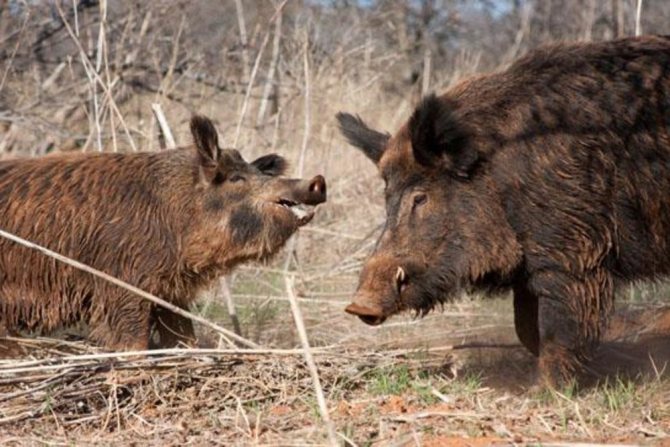
Reliable permanent boar crossings take place through short open spaces and boar crossings across rivers; it is on such paths that it is best to make an ambush.
The blind should be positioned in relation to the trail in such a way that the wind blows from the direction of the trail towards the hunter. The rules of conduct for a hunter on a stand are the same as for other types of wild boar hunting.
On the dirt
Hunting for wild boar on mud is one of the methods of hunting wild boar; it is based on the habit of wild boar taking mud baths, or simply put, wallowing in the mud.
By wallowing in the mud, the wild boar escapes both from the summer heat and from the midges, which in the summer annoy him the most.
Rolling around in the mud, the wild boar itches against the trees, leaving its stubble and worn-out bark on them. Such trees are called “boar scratchers.”
A hunter exploring hunting grounds can easily find both “boar scratchers” and “boar mud baths.” In such places you need to make an ambush.
Wild boar hunting in the mud is best done on bright moonlit nights. An under-barrel flashlight can be a good hunter's assistant on such a hunt.
Boar hunting from ambush
Boar hunting from ambush is one of the favorite methods of hunting among both hunters and poachers.
Wild boar sightings are most often arranged:
- in places where wild boars feed, these can be potato, pea, corn, oat fields, apple orchards
- on boar paths, crossings
- on reservoirs that wild boars visit for watering and swimming
- on mud baths and boar scratchers, which are visited by wild boars on a regular basis
The hunter comes to the stand an hour and a half before sunset and, in absolute silence and without the slightest movement, patiently waits for the boars to appear.
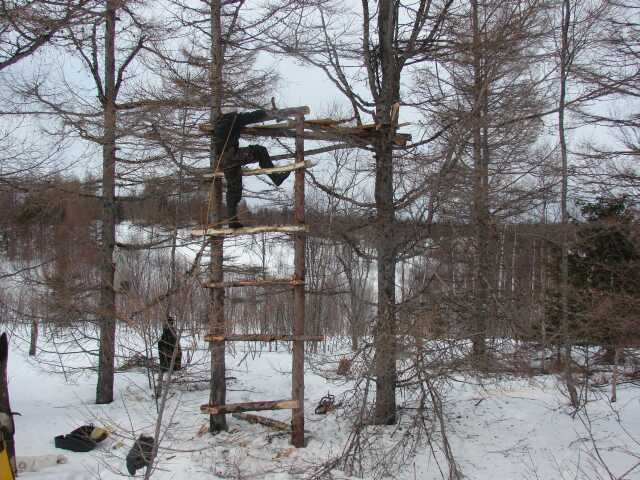
The best time for hunting from ambush is quiet, calm moonlit nights.
If the possibilities of the hunting location allow this, it is better to make a hideout in the form of a platform for sitting on a tree; such a hideout is called a storage shed. A storage shed built on a tree gives the hunter two serious advantages: firstly, the boar does not smell the hunter, since it is high from the ground, and secondly, in the event of a wounded boar, the storage shed ensures the hunter’s safety.
A hunter who is in a blind spot or in a storage shed must maintain absolute silence. Clothing and shoes should be comfortable and not noisy.
Before going out into the open, wild boars stop in thickets of bushes and trees, sniff and listen, trying to determine if there is any danger nearby. Then the gilts are the first to come out into the open space, followed by the pigs with their piglets, and the last to come out are the cleavers.
A hunter who is on a blind spot or in a storage shed should not be in too much of a hurry with the shot, allowing the boars to calmly begin to feed, but at the same time not delay the shot too much, because the boars can smell or hear the hunter at any time and instantly hide.
Boar hunting in the fields
Wild boar hunting in the fields is based on setting up an ambush in a field where wild boars come to feed at night.
First, the hunter needs to find such a field; for this, the hunter walks around agricultural fields during the day and looks for boar tracks, trails, and openings. Since the end of summer, wild boars feed on potato, oat, pea and corn fields; from mid-autumn, when such fields have already been harvested, wild boars often visit apple orchards in search of food.
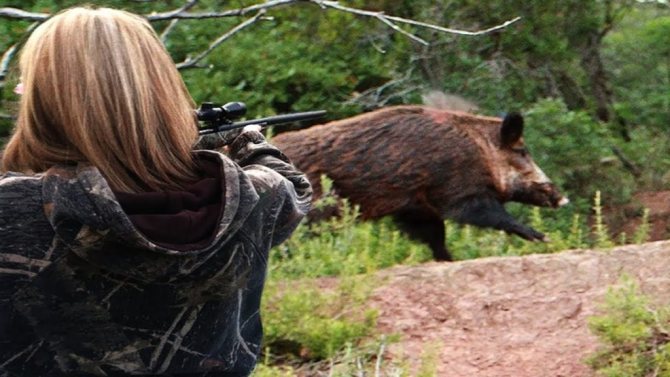
Hunters consider the best fields for boar hunting to be fields sown with peas, oats or corn; if such a field has not been harvested, then wild boars will visit it both in autumn and winter.
Having discovered such a field, the hunter sets up an ambush on it, for this he installs a tower, arranges a hideout or a storage shed, most often the best place for an ambush is the edge of the field adjacent to a forest or ravine.
Boar hunting with decoy
Hunting for wild boar with decoys is not very common among our hunters, although many foreign companies have had wild boar decoys in their assortment for many years.
Most often, such a decoy is used not to lure a wild boar to you, but to imitate the sounds of a feeding boar to approach a herd of feeding wild boars at night within shooting distance. An example of such a decoy is the Nordik Boar decoy.
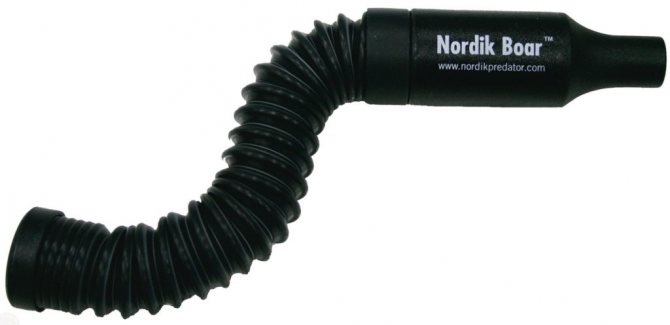
Another type of boar decoy imitates the sounds made by wild boar piglets; the pig's instinct is triggered and it follows the sound of the decoy.
In addition to decoys that imitate the sounds of a wild boar, hunting can also be carried out with decoys that depict the sound of a wounded hare, the cry of a crow, or a magpie. Decoys of this type are good at attracting wild boars, especially loppers, who will never refuse to feast on carrion or a wounded animal.
Hunting for wild boar with decoy is still an exotic practice among us, used by a few hunters.
Boar hunting from a tower
Boar hunting from a tower has become increasingly popular among our hunters in recent years. During such a hunt, the hunter must have self-control and strictly observe silence so as not to frighten off the herd of wild boars that have come out to feed.
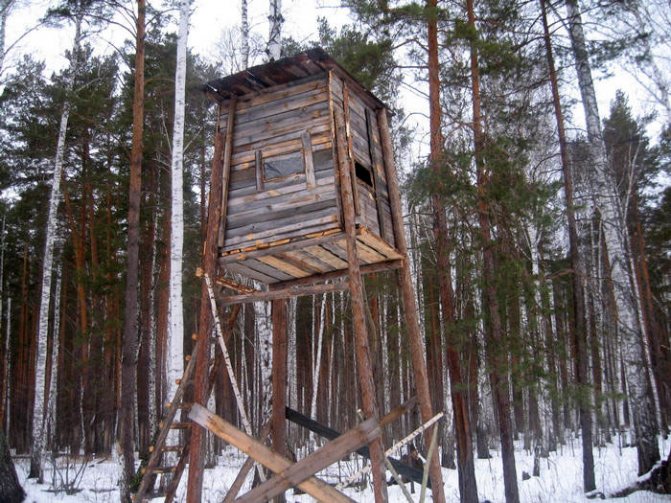
Boar towers are most often installed on a feeding area, where wild boars regularly come to feed. The best time to hunt wild boar from a tower is winter, when wild boars have little food left and they regularly begin to visit the feeding area.
When wild boars come out of the forest to the feeding area, you should not rush to shoot. The hunter must let them calm down so that the boars begin to feed calmly, then you can select one of the boars and fire a shot.
Wild boar hunting from a tower is carried out at night; hunters often use an under-barrel flashlight or a night vision scope.
Boar hunting with huskies
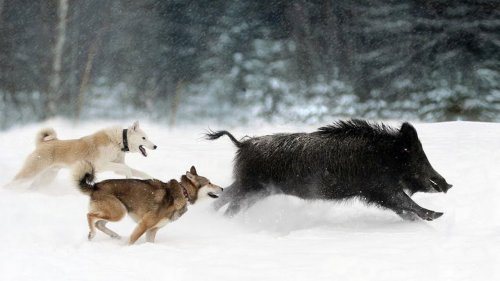
Hunters often use huskies to hunt wild boar. When hunting with huskies, boar hunting can be carried out either alone or by a hunting group. This method of hunting is very interesting and exciting; the success of the hunt depends entirely on the working qualities of the dogs. More details about this type of hunting are described in our article: Boar hunting with huskies.

